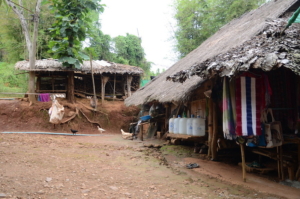Progress in Addressing Poverty in Myanmar
 After a military takeover on February 1, 2021, Myanmar was thrown into a position that undid years of reforms and growth throughout the nation. The military in Myanmar overtook the democratically-elected governing body after its political party did poorly in an election held months earlier. The takeover exacerbated poverty and sparked a humanitarian crisis in Myanmar in 2022, with 40% of the country’s population living below the national poverty line. The conflicts are also expected to leave 2.7 million people in Myanmar displaced by the end of 2023.
After a military takeover on February 1, 2021, Myanmar was thrown into a position that undid years of reforms and growth throughout the nation. The military in Myanmar overtook the democratically-elected governing body after its political party did poorly in an election held months earlier. The takeover exacerbated poverty and sparked a humanitarian crisis in Myanmar in 2022, with 40% of the country’s population living below the national poverty line. The conflicts are also expected to leave 2.7 million people in Myanmar displaced by the end of 2023.
In order to improve the struggling economy and humanitarian crisis, many global organizations and international partners have developed plans and initiatives to provide support for addressing poverty in Myanmar.
Difficulties in providing aid
In May 2023, Myanmar was hit by the powerful storm Cyclone Mocha, exacerbating the plight of the country’s most vulnerable populations. Unfortunately, restrictions imposed by the military have hindered the delivery of support to these affected groups. By June 2023, the U.N. had already sounded the alarm, suggesting that the military’s actions might be in violation of international human rights and humanitarian laws, as they seem to intentionally obstruct aid efforts.
As the country remains mired in conflict and devastation, recent estimates from the U.N. reveal that the military has been responsible for the destruction of around 60,000 civilian structures since the onset of the military takeover. Adding to the tragedy, the military’s actions have resulted in the deaths of at least 3,452 people and the imprisonment of over 20,000 individuals between the start of the takeover and April 2023.
Disturbingly, the U.N. issues a stern warning that if the impediments to humanitarian aid persist—blocking essentials like food, water and shelter—it could give rise to further war crimes, including instances of starvation and collective punishment.
The United Nations Refugee Agency (UNHCR)
Despite the challenges, the United Nations Refugee Agency increased its presence throughout Myanmar in 2022. During the year, the UNHCR helped 325,200 internally displaced persons (IDPs) to return back to their place of origin in the Rakhine region of the country.
Additionally, the UNHCR provided in-kind support to 500,000 IDPs, shelter support to 100,000 and cash assistance to 51,500. The organization worked to bring this much-needed assistance with the help of partnerships with NGOs, civil societies and faith-based organizations.
The UNHCR also collaborated with other nearby nations such as Indonesia, to provide a safe place for refugees leaving Myanmar to find aid. In 2022, Indonesia accepted more than 700 refugees into the Aceh province.
In 2022, Bangladesh collaborated extensively with the UNHCR to modify refugee education programs to suit refugees from Myanmar. These educational initiatives have benefited more than 40,000 children who relocated to Bangladesh following the military takeover in Myanmar. Given that education is a well-established route out of poverty, ensuring the continuity of education for displaced individuals becomes paramount.
In 2023, UNHCR continued to work closely alongside Bangladesh to continue supporting more than 900,000 Myanmar refugees living in the country. UNHCR will provide production kits to support livelihood creation and skills building for 72,000 households and will continue increasing Myanmar education to an additional 12,280 pre-primary children.
Looking Ahead
Myanmar’s humanitarian crisis continues to persist. Thousands in the country remain displaced and live below the poverty line. However, organizations like the UN Refugee Agency have paired with partners to continue addressing poverty in Myanmar.
– Tristan Weisenbach
Photo: Flickr
